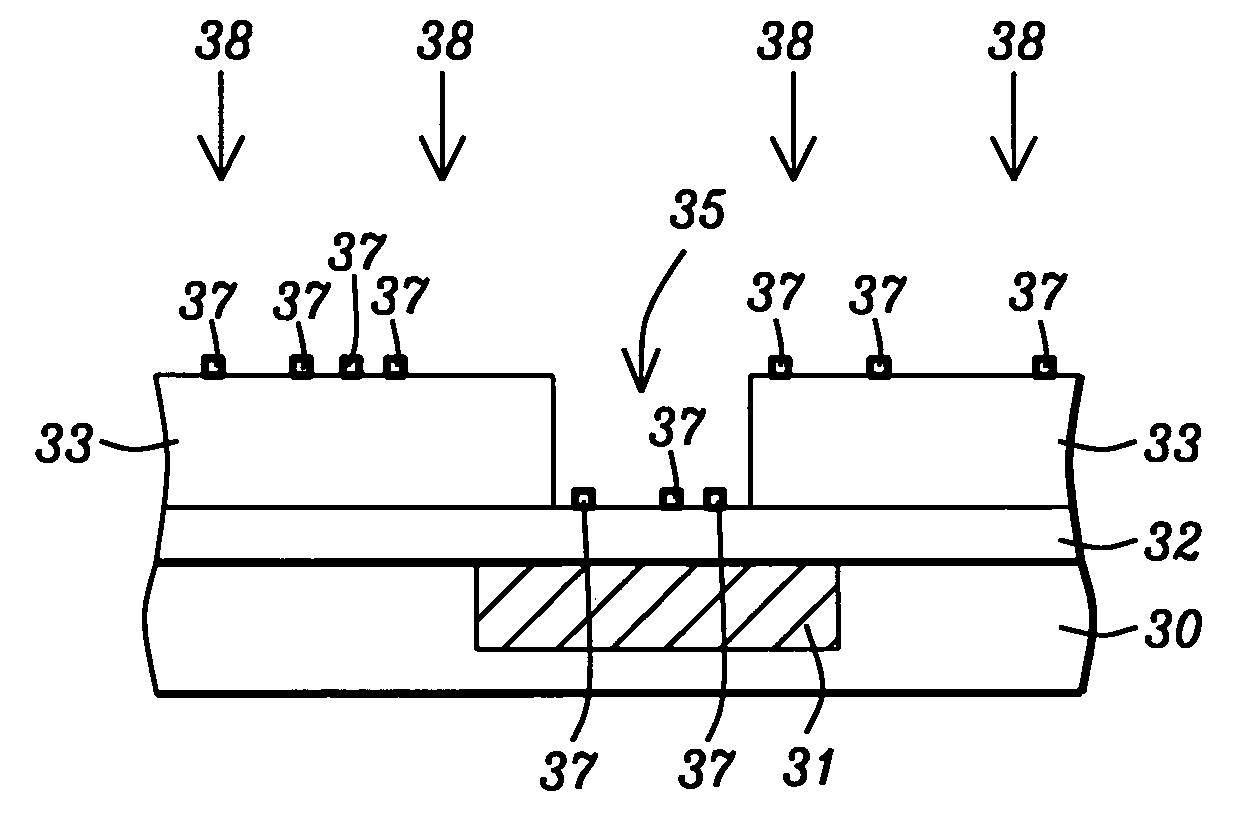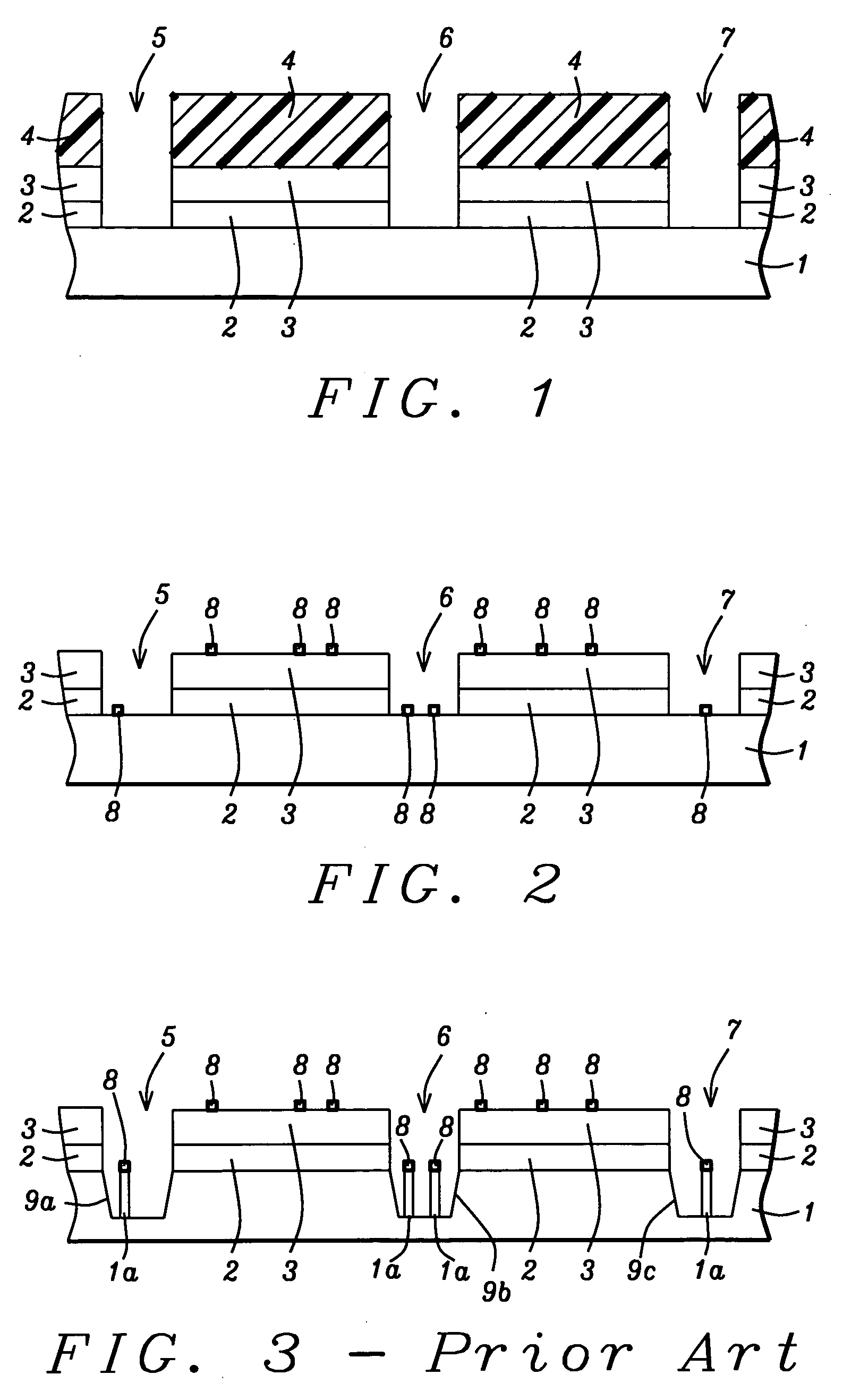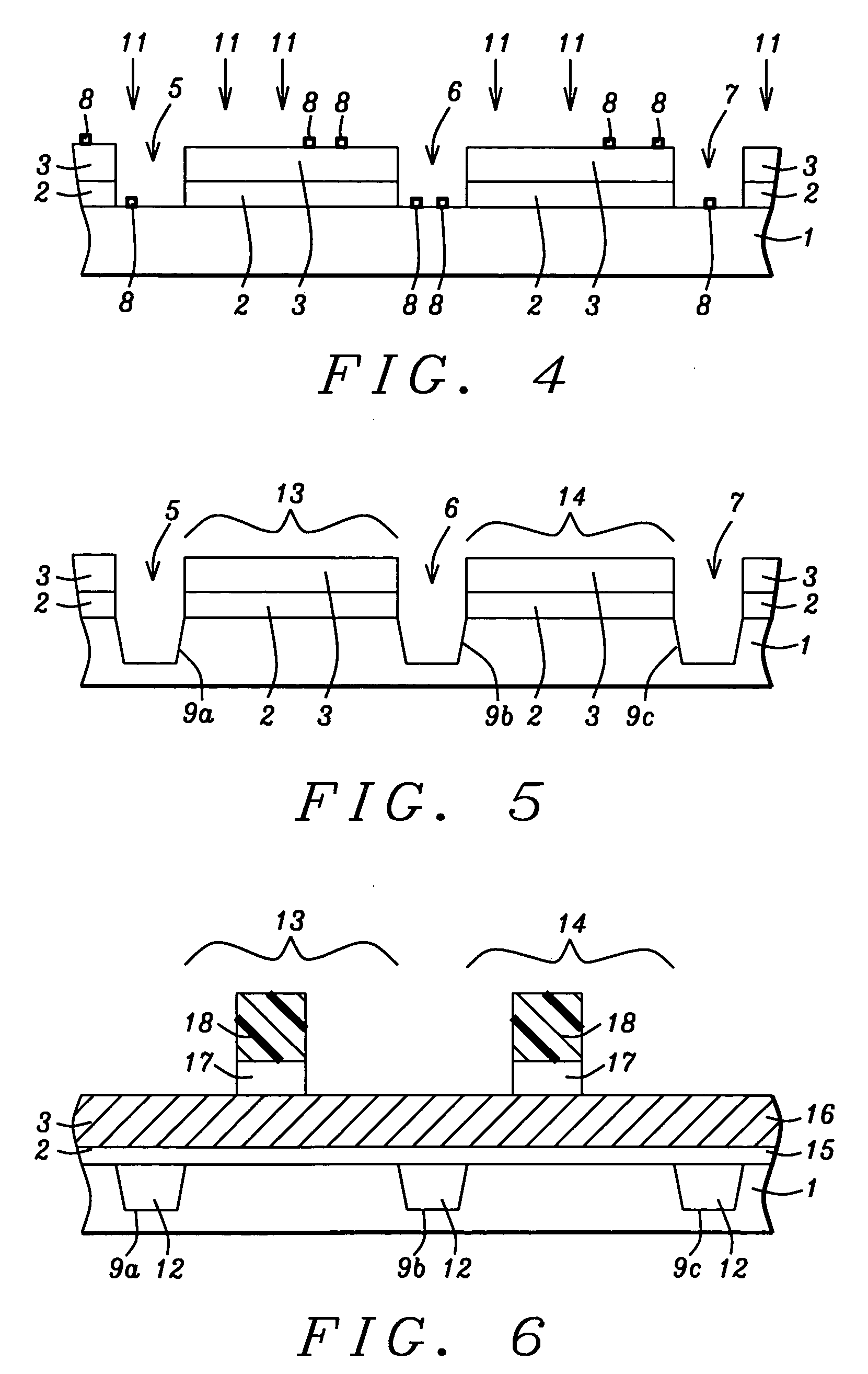Method of in-situ damage removal - post O2 dry process
a dry process and in-situ technology, applied in the field of integrated circuit fabrication, can solve the problems of degrading device performance, affecting the operation of the instrument, and requiring a large rework process to remove defects,
- Summary
- Abstract
- Description
- Claims
- Application Information
AI Technical Summary
Benefits of technology
Problems solved by technology
Method used
Image
Examples
first embodiment
[0029] Therefore, three embodiments of the present invention are provided although those skilled in the art will appreciate that other applications of the oxide residue removal method of this invention which are not discussed herein are possible. A first embodiment is depicted in FIGS. 1, 2, 4, and 5.
[0030] Although FIGS. 1 and 2 were described previously, a more detailed description is now provided of the various elements therein as they apply to the present invention. Referring to FIG. 1, a substrate 1 is shown that is typically silicon but may optionally be comprised of silicon-on-insulator (SOI), silicon-germanium (SiGe), gallium-arsenide (GaAs) or other semiconductor materials used in the art. The pad oxide layer 2 is grown on substrate 1 by a rapid thermal oxidation (RTO), for example, or may be deposited by a chemical vapor deposition (CVD) method. The pad oxide layer 2 has a thickness between about 30 and 300 Angstroms. A hard mask layer 3 comprised of silicon nitride or pol...
second embodiment
[0039] Referring to FIG. 6, a structure is shown that in an exemplary process flow of the second embodiment is derived from the structure pictured in FIG. 5 in which the active regions 13, 14 are formed between the shallow trenches 9a, 9b and 9b, 9c, respectively. The shallow trenches 9a, 9b, 9c are then filled with an insulating layer 12 such as SiO2 or a low k dielectric layer by a CVD, PECVD, or a spin-on method. Optionally, an oxide liner (not shown) may be grown on the sidewalls and bottom of the shallow trenches 9a, 9b, 9c prior to deposition of the insulating layer 12. Typically, the insulating layer 12 is planarized by a chemical mechanical polish (CMP) process and hard mask 3 and pad oxide 2 are then removed by methods well known to those skilled in the art. For instance, a H3PO4 treatment may be used to remove a silicon nitride hard mask 3 while a dip in a dilute HF solution may be performed to remove a pad oxide layer 2. Although the insulating layer 12 is shown as coplan...
third embodiment
[0047] A third embodiment is depicted in FIGS. 10-13 and involves an integrated process flow in which a first oxygen ashing step is used to remove a photoresist layer over a dielectric layer but generates oxide residues. A plasma step then removes oxide residues and an exposed etch stop layer at the bottom of an opening as part of a damascene scheme to fabricate an interconnect. An additional plasma step removes polymers that are generated by the previous plasma step.
[0048] Referring to FIG. 10, a substrate 30 is shown which is typically silicon but may optionally be comprised of silicon-on-insulator (SOI), silicon-germanium (SiGe), gallium-arsenide (GaAs) or other semiconductor materials used in the art. A conductive layer 31 is formed in substrate 30 by conventional means and has a top surface that is coplanar with the top surface of substrate 30. Optionally, a thin diffusion barrier layer (not shown) is formed along the sides and bottom of the conductive layer 31 to protect the c...
PUM
| Property | Measurement | Unit |
|---|---|---|
| temperature | aaaaa | aaaaa |
| pressure | aaaaa | aaaaa |
| pressure | aaaaa | aaaaa |
Abstract
Description
Claims
Application Information
 Login to View More
Login to View More - R&D
- Intellectual Property
- Life Sciences
- Materials
- Tech Scout
- Unparalleled Data Quality
- Higher Quality Content
- 60% Fewer Hallucinations
Browse by: Latest US Patents, China's latest patents, Technical Efficacy Thesaurus, Application Domain, Technology Topic, Popular Technical Reports.
© 2025 PatSnap. All rights reserved.Legal|Privacy policy|Modern Slavery Act Transparency Statement|Sitemap|About US| Contact US: help@patsnap.com



